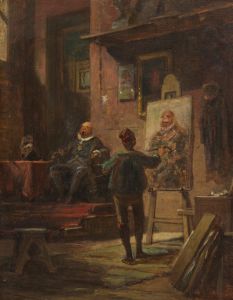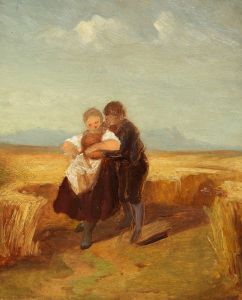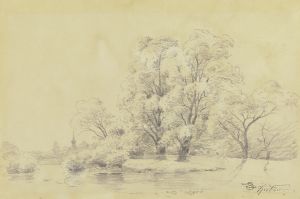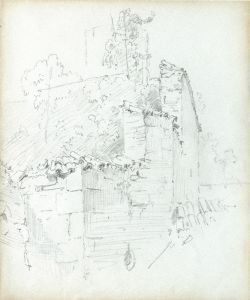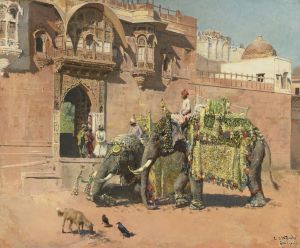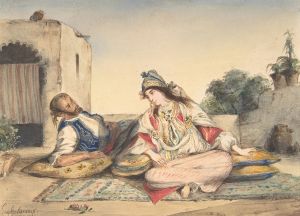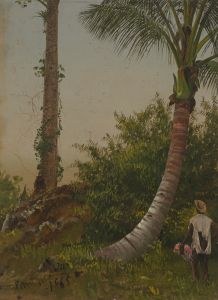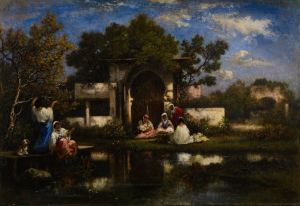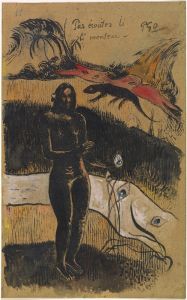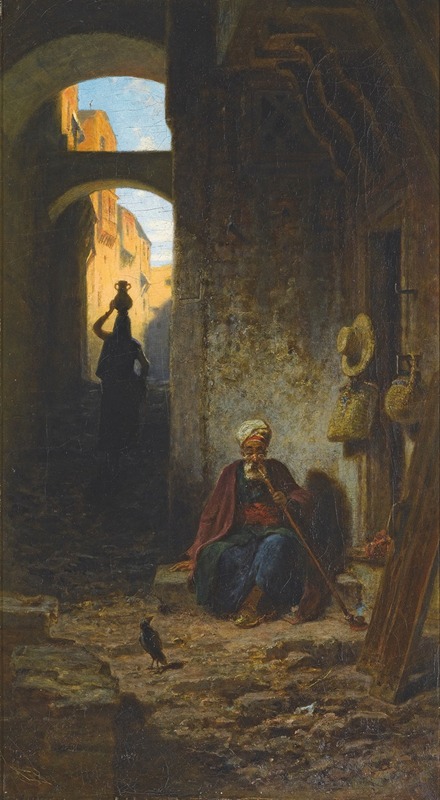
Out Of The Orient
A hand-painted replica of Carl Spitzweg’s masterpiece Out Of The Orient, meticulously crafted by professional artists to capture the true essence of the original. Each piece is created with museum-quality canvas and rare mineral pigments, carefully painted by experienced artists with delicate brushstrokes and rich, layered colors to perfectly recreate the texture of the original artwork. Unlike machine-printed reproductions, this hand-painted version brings the painting to life, infused with the artist’s emotions and skill in every stroke. Whether for personal collection or home decoration, it instantly elevates the artistic atmosphere of any space.
Carl Spitzweg was a renowned German painter and poet, born on February 5, 1808, in Unterpfaffenhofen, Bavaria. He is best known for his genre paintings, which often depict humorous and anecdotal scenes from everyday life. One of his notable works is "Out Of The Orient," which showcases his distinctive style and thematic interests.
"Out Of The Orient" is a painting that reflects Spitzweg's fascination with exoticism and the romanticized view of the East that was prevalent in 19th-century Europe. The painting captures a scene that is both whimsical and detailed, characteristic of Spitzweg's approach to art. His works often include a blend of humor and a keen observation of human nature, and "Out Of The Orient" is no exception.
The painting features a richly dressed figure, presumably an Oriental merchant or traveler, surrounded by various objects that signify wealth and the exotic allure of the East. The setting is meticulously detailed, with an array of items such as carpets, vases, and other artifacts that were commonly associated with the Orient during that period. Spitzweg's use of color and light in the painting enhances the sense of opulence and mystery, drawing the viewer into the scene.
Spitzweg's interest in the Orient was not unique to him; it was part of a broader trend in 19th-century European art and literature known as Orientalism. This movement was characterized by a fascination with the cultures, landscapes, and peoples of the Middle East, North Africa, and Asia. Artists and writers of the time often depicted these regions in a romanticized and idealized manner, which was both a reflection of and a response to the colonial and imperial interests of European powers.
"Out Of The Orient" exemplifies Spitzweg's ability to blend this fascination with his own unique artistic vision. His attention to detail and his ability to capture the essence of his subjects make his works enduringly popular. Spitzweg's paintings often contain a narrative element, inviting viewers to imagine the stories behind the scenes he depicts.
Carl Spitzweg's contribution to art extends beyond his paintings. He was also a poet and a pharmacist by training, which influenced his meticulous approach to his artwork. His legacy is celebrated in Germany and beyond, with his works held in high regard for their charm, wit, and technical skill.
"Out Of The Orient" remains a testament to Spitzweg's talent and his ability to capture the spirit of his time. It is a piece that continues to be appreciated for its artistic merit and its reflection of 19th-century European perspectives on the East. Through this painting, Spitzweg invites viewers to explore a world that is both familiar and fantastical, bridging the gap between reality and imagination.





